Giant stone artefacts, including a Late Acheulean ‘Giant’ handaxe, found on rare Ice Age site at Manor Farm, Frindsbury, Kent, ahead of construction of a new school, Maritime Academy, which has given its name to this new Palaeolithic site.
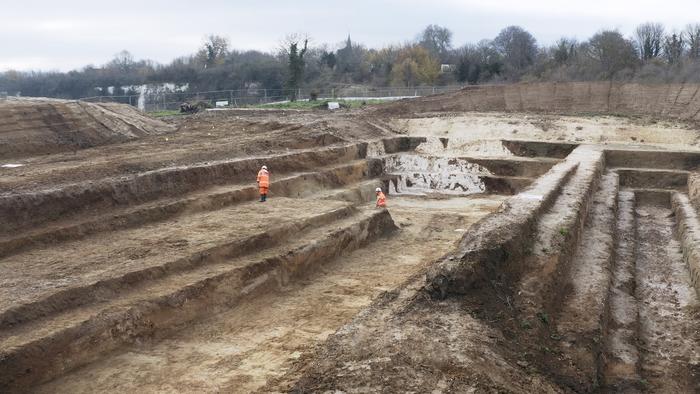
The excavations, which took place in Kent and were commissioned in advance of development of the Maritime Academy School in Frindsbury, revealed prehistoric artefacts in deep Ice Age sediments preserved on a hillside above the Medway Valley.
The researchers, from UCL Archaeology South-East, discovered 800 stone artefacts thought to be over 300,000 years old, buried in sediments which filled a sinkhole and ancient river channel, outlined in their research, published in Internet Archaeology.
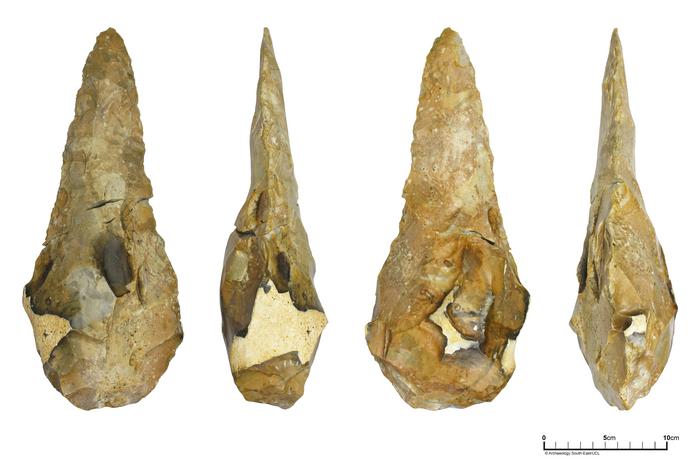
Amongst the unearthed artefacts were two extremely large flint knives described as “giant handaxes”. Handaxes are stone artefacts which have been chipped, or “knapped,” on both sides to produce a symmetrical shape with a long cutting edge. Researchers believe this type of tool was usually held in the hand and may have been used for butchering animals and cutting meat. The two largest handaxes found at the Maritime site have a distinctive shape with a long and finely worked pointed tip, and a much thicker base.
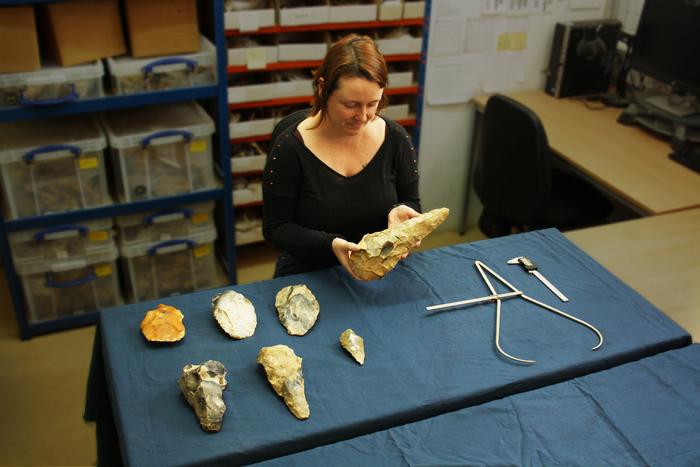
Senior Archaeologist Letty Ingrey (UCL Institute of Archaeology), said:
“We describe these tools as ‘giants’ when they are over 22cm long and we have two in this size range. The biggest, a colossal 29.5cm in length, is one of the longest ever found in Britain. ‘Giant handaxes’ like this are usually found in the Thames and Medway regions and date from over 300,000 years ago.”
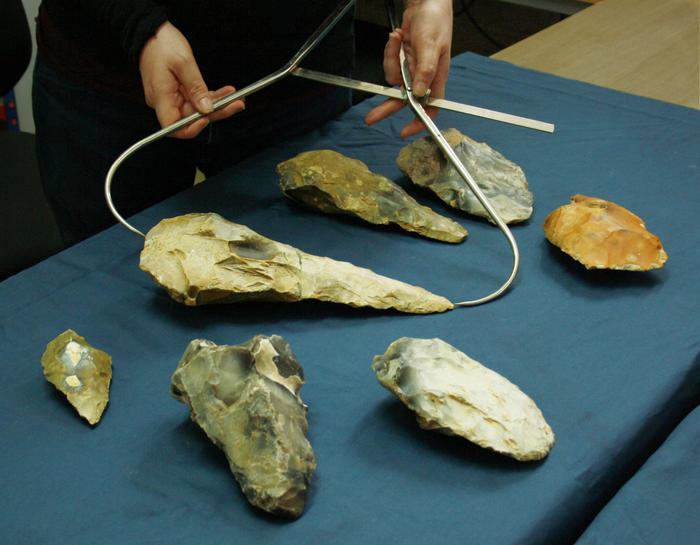
“These handaxes are so big it’s difficult to imagine how they could have been easily held and used. Perhaps they fulfilled a less practical or more symbolic function than other tools, a clear demonstration of strength and skill. While right now, we aren’t sure why such large tools were being made, or which species of early human were making them, this site offers a chance to answer these exciting questions.”
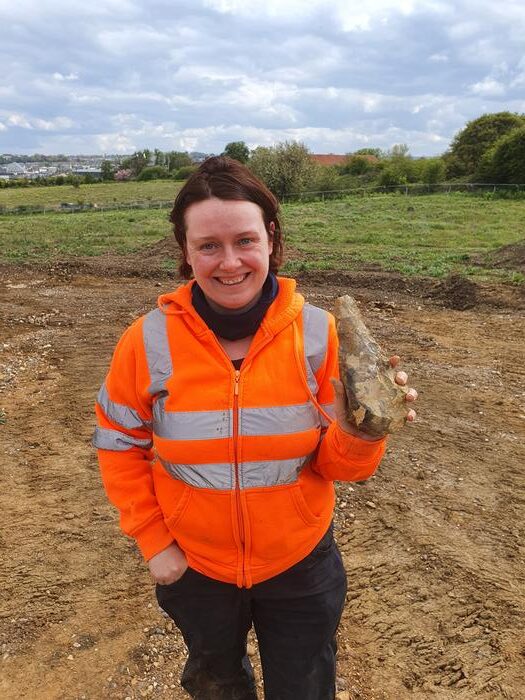
The site is thought to date to a period in the early prehistory of Britain when Neanderthal people and their cultures were beginning to emerge and may even have shared the landscape with other early human species. The Medway Valley at this time would have been a wild landscape of wooded hills and river valleys, inhabited by red deer and horses, as well as less familiar mammals such as the now-extinct straight-tusked elephant and lion.
While archaeological finds of this age, including another spectacular ‘giant’ handaxe, have been found in the Medway Valley before, this is the first time they have been found as part of large-scale excavation, offering the opportunity to glean more insights into the lives of their makers.
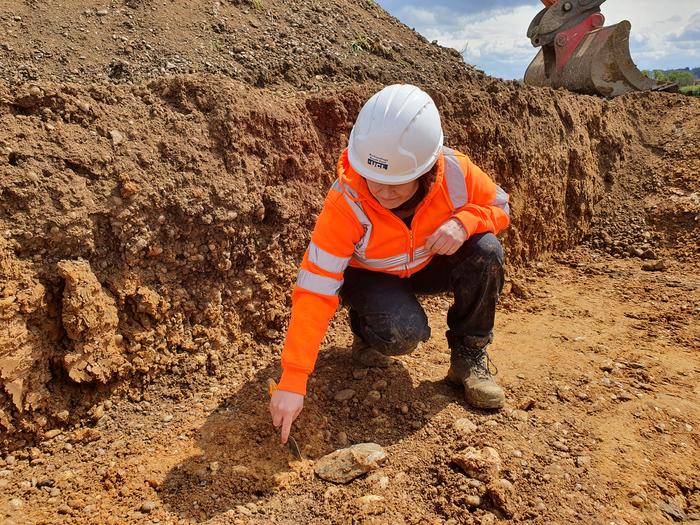
Dr Matt Pope (UCL Institute of Archaeology), said:
“The excavations at the Maritime Academy have given us an incredibly valuable opportunity to study how an entire Ice Age landscape developed over a quarter of a million years ago. A programme of scientific analysis, involving specialists from UCL and other UK institutions, will now help us to understand why the site was important to ancient people and how the stone artefacts, including the ‘giant handaxes’ helped them adapt to the challenges of Ice Age environments.”
The research team is now working on identifying and studying the recovered artefacts to better understand who created them and what they were used for.
Senior Archaeologist Giles Dawkes (UCL Institute of Archaeology) is leading work on a second significant find from the site – a Roman cemetery, dating to at least a quarter of a million years later than the Ice Age activity. The people buried here between the first and fourth centuries AD could have been the inhabitants of a suspected nearby villa that may have lain around 850 metres to the south.
The team found the remains of 25 individuals, 13 of which were cremated. Nine of the buried individuals were found with goods or personal items including bracelets, and four were interred in wooden coffins. Collections of pottery and animal bones found nearby likely relate to feasting rituals at the time of burial. Though Roman buildings and structures have been extensively excavated, cemeteries have historically been less of a focus for archaeologists and the discovery of this site offers potentially new insights into the burial customs and traditions of both the Romans who lived at the villa, and those in the nearby town of Rochester.
Jody Murphy, Director of Education at the Thinking Schools Academy Trust said:
“We, at Maritime Academy and the Thinking Schools Academy Trust, feel very lucky to be a part of this phenomenal discovery. We take great pride in our connection to our local community and region, with much of our school identity linked to the history of Medway. We look forward to taking advantage of this unique opportunity to teach our young people about these finds, creating a lasting legacy for those who came before us.”
Bibliographic information:
On the Discovery of a Late Acheulean ‘Giant’ Handaxe from the Maritime Academy, Frindsbury, Kent, Internet Archaeology (6-Jul-2023), DOI: 10.11141/ia.61.6
Press release from University College London – UCL.


